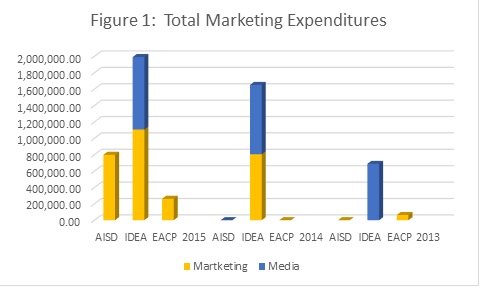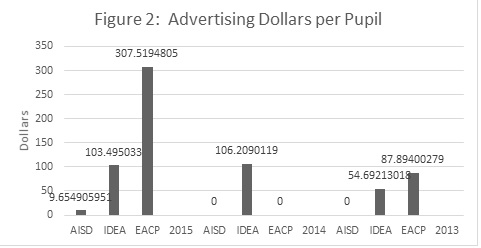Before returning to the accountability history of Johnston and Eastside Memorial, I would like to take a moment to share some remarks from a recent school board meeting where I critiqued the proposal to move the Liberal Arts and Science Academy (LASA) to the former site of Anderson High School (the school for African Americans under segregation) in East Austin. (LASA’s influence at Eastside Memorial is discussed in last weeks post)
(LASA) is a selective public magnet high-school. The demographics of the school ethnicities are 23% Hispanic, 3% Black/African-American, 51% White, 20% Asian, 2% American Indian, and 1% Hawaiian/Native Pacific Islander for a total enrollment of 796 students (Lamb, 2014). LASA is collocated within LBJ High School (LBJ), LBJ is an Early College High School with different ethnicity/race demographics: 30% Hispanic, 39% Black/African-American, 15% White, 1% Asian, 14% American Indian, 1% Hawaiian/Native Pacific and a total enrollment of 648 (Lamb, 2014). Counted as one school, on paper LBJ and LASA are a model for racial diversity and their closely related socioeconomic status indicators, but in reality the two schools are worlds apart.
LBJ may have college in its name but on average sixty-six percent of the students agree with the statement, “I will go to college after high school,” thirty-four percent say “maybe” (AISD, 2014). At LASA ninety-three percent of students say “yes” and six percent say “maybe” (AISD, 2014). Even the response rates to the survey of both schools is telling. LBJ was sixty percent, LASA was eighty-eight percent, and the district average was seventy-three percent on the Student Climate Survey. Not only are students from the neighborhood being served by LBJ less likely to participate in sharing their voice, but students are also less sure that college is in their future. On the other hand LASA students not only show greater participation but also have generally more optimistic perceptions of their school climate.
It is with the above passage in mind that I drafted the subsequent citizen’s communication last week at the Austin ISD board meeting:
“Janelle Scott points out that historically the imposition of middle-class values and pronouncement of the liberal creed of “pulling yourself up by the bootstraps,” is heralded by white men claiming to know what the best course of action should be.
The choice the Austin school district made to house its most prestigious academic track at LBJ did not occur in a vacuum but was influenced by a historical context white consultants from Washington DC are likely ignorant to. A desire to both recapture students leaving due to white flight as well as to increase enrollment in an economically and racially stratified part of Austin drove the district’s initial placement of the magnet schools at Johnston and LBJ, subsequent consolidation, and is driving the proposal to relocate the campus. I argue that one of the major reasons the school choice movements has come to flourish is because rather than confront the glaring inequalities of a society stratified by race and class by standing up to the underfunded mandates of TEA and teaching critical pedagogy and Praxis, public schools allow the same disparate outcomes as separate but equal under the guise of equal opportunity in a post racial society. Researchers describe schools like LBJ as characteristically displaying “higher-than-average suspension rates and lower-than-average graduation rates” (Fabricant & Fine, 2010 p.121). Therefore the STAAR test serves to discipline LBJ while simultaneously ennobling LASA to participate in social reproduction and white supremacy. In 2014 26% of LASA students were nonasian minorities, that number is nearly three times as much, 69% of students at LBJ are nonasian minorities.
Magnet schools, like LASA, take on air of democratic equality, but from the brief example above there is little equity in a system where some parents can choose and participate in the best public education has to offer, a choice often accompanied by the social capital to be informed about the program, and the ability to afford the supplemental supports- academic, social, and communal- to make their child a viable candidate. On the other hand, parents at LBJ have a reduced ability to choose based on broader historical, racial, and economic contexts. Contexts which are tertiary concerns at best when consultants are hired to evaluate facilities and efficiency in an ahistorical fashion.
Therefore I ask that Black Anderson (now the Alternative Learning Center) not be repurposed to house LASA, Representing the erasure of culture, perpetuating the burden of desegregation disproportionately placed on our African American community, and representing the final gentrifying nail in the east Austin cultural coffin”.
*Photo Credit for this installment goes to Rodolfo Gonzales retrieved from: http://preps.blog.statesman.com/2015/06/11/prepped-and-ready-reviewing-the-2014-15-school-year/




